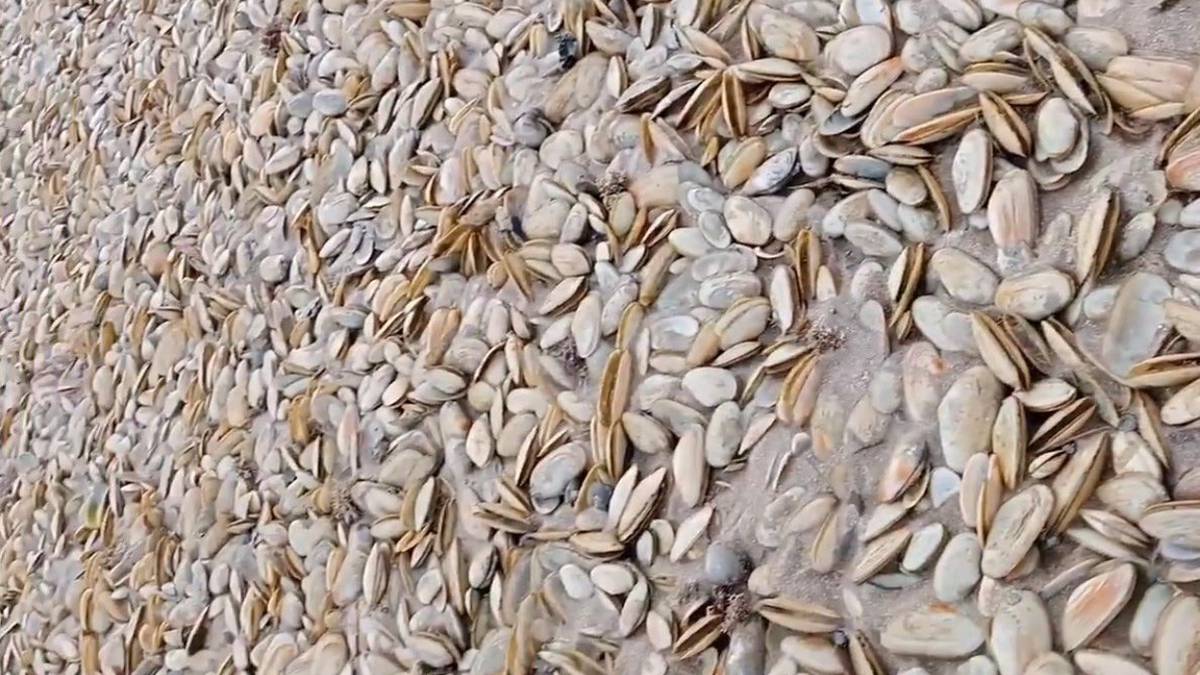A still taken from the video footage shows the mass of dead and dying pipi in Pataua.
A local hapū is doing its own investigation into the death of thousands of pipi across a shellfish-gathering hotspot in Northland.
A video posted on social media showed a sea of dead and dying pipi strewn across the sandbars between Pataua North and South – popular with seafood gatherers – on July 2.
Layers of dead molluscs could be seen in the footage, each with its shell gaping open.
Theories shared online included whether the onslaught of heavy rain had made the water too fresh for the pipi to survive.
Another person pondered whether their deaths may be a seasonal occurrence. Others blamed poor water quality and climate change.
Testing by the Ministry of Primary Industries has not conclusively identified the cause of their deaths, but MPI said it was most likely due to environmental factors.
There was no evidence of biosecurity issues.
MPI’s director of diagnostic & surveillance services, Veronica Herrera, said testing had identified signs of irritation to the gills of the shellfish that could be caused by irritants such as sand and silt.
“We note recent heavy rainfall could have been behind this. Finally, there was evidence the pipi had recently spawned, a physically stressful process for the shellfish which could leave them more vulnerable to environmental factors.”
She said MPI has informed the local kaitiaki of the test results.
Tangata kaitiaki for the rohe moana of Pataua, Arthur Mahanga, said his hapū was doing its own studies on the cause of the deaths and ways to preserve the shellfish.
A rāhui is still in place where the dead and dying pipi were found.
Mahanga said his hapū has its own theory about how the pipi died, but that needed to be discussed by its members before sharing it with anyone else.
“Whangārei is now one of the main places pipi is found, so we have to protect the resource and make sure it’s sustainable for the future.”
A local who announced the discovery of the dead and dying shellfish on social media said cockles, tuatua, mussels, oysters, and Karahue snails were alive among the dead pipi.
Live pipi were also found in the water, locals say.
MPI and the local hapū said under no circumstances should the shellfish be collected or eaten while tests were being carried out.
The same phenomenon has occurred around the country, and happened in Whangārei in 2015.
Back then, the pipi population in Whangārei Harbour slumped from 10,000 tonnes to less than 100 tonnes – possibly due to poisoning by a naturally occurring compound from pine acting like a pesticide.




